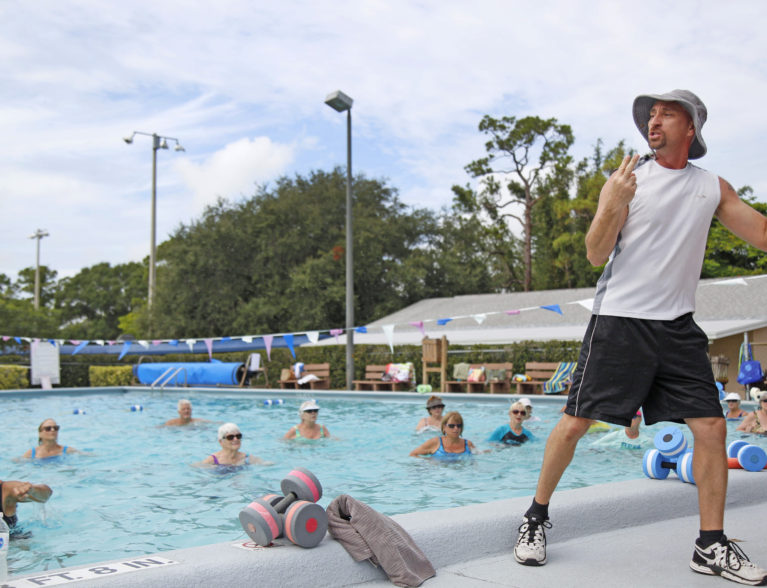
As Vero Beach officials wrestle with the fate of the Leisure Square pool and continue to seek ways to offset the operating costs of the city’s Recreation Department, it’s fair to wonder whether the overall community would be better-served if the county and city still had a joint recreation department, the way they did up until 2002.
The consensus among government officials seems to be that a recreation department partnership would be helpful for the city but that it isn’t a realistic possibility in 2019.
“It might make sense to have a countywide recreation department, but with all the changes in the county over the years, we could never go back to that kind of joint operation with Vero Beach,” County Commissioner Bob Solari said.
“At that point in history, the city was the big municipality in the county, so it made sense for the city to be the leader in this,” he added. “That’s no longer the case, however. The county has grown, and the city hasn’t, and the county has an obligation to its other municipalities, too, especially in the North County.
“Sebastian now has a larger population than Vero Beach.”
Sebastian also has a Parks and Recreation Division that operates 17 parks, including a dog park, as well as a municipal golf course, a yacht club and a skate facility at the Barber Street Sports Complex.
Vero Beach has 16 parks, including three on the ocean manned by city lifeguards. It also operates a tennis complex at Riverside Park and a boat ramp at MacWilliam Park. In addition, it provides space for the Vero Beach Dog Park and Pickleball University, which operates at Pocahontas Park.
Then there’s Leisure Square, which, in addition to providing the only public swimming pool in the southern half of the county, offers basketball and volleyball courts, one racquetball court, and fitness rooms.
Meanwhile, the county recreation department operates more than 30 parks, boat launches and trails, along with the fairgrounds, the Intergenerational Center and two swimming pools.
Part of the nostalgia on the part of Vero officials for a joint program comes because so many county residents use city parks and facilities.
Recently retired city manager Jim O’Connor said more than 60 percent of the people using Vero Beach’s parks and recreational facilities are county residents who live outside the city.
“Yet the city absorbs 100 percent of the costs,” O’Connor said. “From that standpoint alone, the joint city-county rec department was better for the city.” In the final years of the partnership, the county was paying the city $680,000 annually to cover its share of the recreation costs.
The 2002 split was initiated by the county, spurred by then-commissioner Fran Adams.
“It came down to growth and money,” said Joe Baird, the longtime county administrator who retired in 2016 and was the county’s finance director when the decision was made. “The county had grown to the point where we thought we should have our own rec department.
“We also thought we were contributing too much in funding to the city,” he added. “After the split, we hired our own staff and director, and our budget was only $300,000 a year. That was less than half of what we were paying the city.”
Another factor, Baird said, was then-County Administrator Jim Chandler’s frustration with the joint recreation department being managed by a director, Pat Callahan, who answered to the Vero Beach city manager.
“Even so,” Baird said, “we wouldn’t have done it if we couldn’t save money.”
Baird, Brown and Solari agreed that separating from the city was the right move for the county. While they conceded the city better maintains its parks, especially on the island, they said the county offers more recreational programs and activities.
Vero Beach Mayor Val Zudans said “it would be nice” if the county partially funded the city’s Recreation Department, since so many county residents use the city’s parks, but he’s not expecting “much enthusiasm” from county officials.
“The county and city worked well together on the FPL sale,” Zudans said, referring to the city’s sale of its electric utility. “Maybe we could work together on some recreation costs as well.”
That doesn’t seem likely to happen.
“I don’t want to get into a situation where the cities start thinking they can provide fewer services and the county will pick up the slack,” Brown said.
Solari offered a different argument, saying: “I never understood why the city feels put upon. The city says it wants tourism. Well, county residents who live outside the city are essentially tourists when they go to the city’s beach parks, eat in the city’s restaurants and shop in the city’s stores.
“So, what do you want?”



